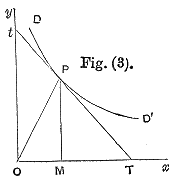Orchestral Elasticity
02 December 2014 by Marc Taddei
Orchestras in general have been used as an analogy for a wide variety of extra-musical concepts. An inspirational teacher of mine, Roger Nierenberg has formulated the “Music Paradigm” course which uses the relationship of conductor and orchestra to demonstrate good corporate structure. Federico Fellini’s “Orchestra Rehearsal” is tag lined, “ The Decline of the West in C# Major”! There has also been a lot of interest in the state of orchestral performance from economists. Orchestras seem to be easy to relate to in economic terms. Economists speak of elasticity of supply and demand (economists have the best words and phrases!) and orchestras and their funders should have a clear idea of these concepts.
Price elasticity measures the quantity of goods (in this case, tickets to concerts and subscriptions) required because of a change in price structure. Once this is worked out, one can see the relationship between the change of price and the total revenue earned. So, for instance if the demand is inelastic (that is, it is something that one must have or something that is not easily substituted), increasing price will also increase revenue (because sales will not appreciably suffer), whereas if the demand is elastic, increasing the price will actually decrease revenue. I’m sure you can start to see where I am going with this.
How does demand for orchestral concerts change when prices change? How does the demand for orchestral concerts change when the price of substitute goods change? How does demand for orchestral concerts change with unique programming initiatives (which is a way that orchestras can effect a more inelastic demand scenario)?
We must consider orchestral concerts as a form of entertainment because much of our audience does and I have no doubt that the majority of potential audience members we seek certainly consider our art form in this way. If this is the case and I certainly think that in terms of growing audience outside of our core, we certainly come face to face with a considerable array of substitutions for the entertainment dollar – there is a consequently high degree of elasticity. Simply put there are a variety of substitute goods out there. Things become less elastic when we consider only live performance but if the brilliant musicologist, Richard Tauruskin is correct, opera as an art form is in decline because of the emergence of the cinema as the major outlet for grand entertainment and/or artistic fulfillment.
In New Zealand there are a number of very fine regional orchestras and a national touring orchestra that performs in all the major centers. There is a consequently high level of orchestral performance on offer, so it’s a buyer’s market and there is a high degree of elasticity in the arcane world of live orchestral performance!
The NZSO and the regional orchestras compete with each other for a share of the market. Thinking as a lover of art music, this is a situation that greatly favours the music-lover! In this situation, I would like to imagine that potential audience members will attend concerts by every professional orchestra that they could! Certainly, when I am working in major centres overseas, I make my best attempt to hear as much as I can (in addition to the orchestras that I might be working with). However, looking around audiences for the NZSO and the regional orchestras, one sees many different faces! Brand loyalty certainly plays a part in this. The content of what is presented also plays a critical part. Price is a factor and it is interesting to see “pay your age” initiatives” being introduced by the national orchestra for under 35 year old audience members. Recently, Orchestra Wellington has introduced an exciting initiative that presupposes that the market for live orchestral music is highly elastic.
The pricing structure of Orchestra Wellington’s subscription series starts at $60 for one concert, $92 for two, $114 for 3, $120 for four, $130 for five and (this is where it gets very interesting) $108 for the entire season! While this is a limited time offer, the pricing structure is such that it is cheaper to buy a subscription to six concerts than it is three, four or five concert subscriptions! The quantity supplied is roughly 2200 tickets per concert – a tall order in a city of 400,000 that is also home to the national orchestra. In contrast, Auckland (which certainly has more opportunities to hear orchestral music) has a hall that seats 1673 but has a population of just on 1.4 million. It will be very interesting to see how the public takes to this pricing structure. These numbers will make for an inelastic supply situation but as the numbers are so high, it makes great sense to offer pricing incentives to our audience. It would be amazing to get 2200 people out for each concert! A high price elasticity suggests that when the price of tickets go down, we will supply a great deal more.
Of course, I would also like to think that the programming we provide is a significant point of difference as we compete with the NZSO, which will in turn contribute to the interest in our season subscriptions! I think the best way towards approaching this perception that an orchestral concert is a necessity is through great programming. An obvious method is to bring in a soloist or conductor who is a major figure and has not performed in the area. Featuring Anne-Sophie von Otter with Orchestra Wellington is an excellent example of this approach. More recently, programming a perennial favorite such as Carmina Burana can also bring a sense of necessity. These programs were inelastic because there was only a limited and exclusive chance to attend these programs. This is why programming must be considered to be a hugely important function of a music director. While artistic growth and development are the aspects that most focus on with great conductors, I believe it is conductor’s abilities in programming to effect a sense of occasion, inspiration and pure joy that lays the strongest possible bedrock of success for an orchestra.
I look forward to seeing how Orchestra Wellington’s new pricing structures impact on audience figures. When the final figures are processed in a years time, I will be extremely interesting to see what the season’s Price Elasticity of Demand was. I will report back next year with the figures (once I find an economist who can help me with the math!)
In conclusion, please have a look at Orchestra Wellington’s 2015 season. You can find a link right here. I urge you to purchase tickets if you like what you see and want to make a statement in favour of orchestral elasticity !
